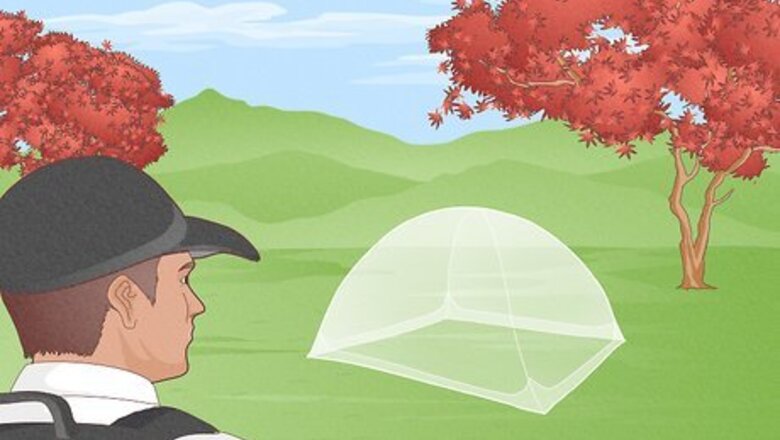
views
Setting-up a Self-Supporting Net
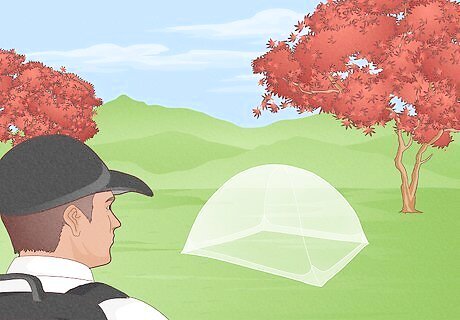
Locate a suitable area for your net. Find a flat, dry area that is several yards from any open water. Self-supporting nets are like tents, so you can find a spot that you would feel comfortable setting up a tent on. If you’re inside, find a spot where you will feel the most comfortable and that has enough room for the net.
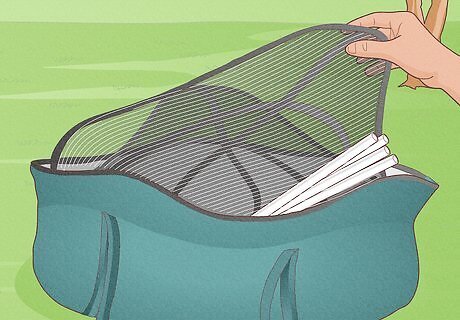
Unpack the net. Remove the net, as well as any rods, strings, and stakes, from its bag. Separate the net from the other parts.
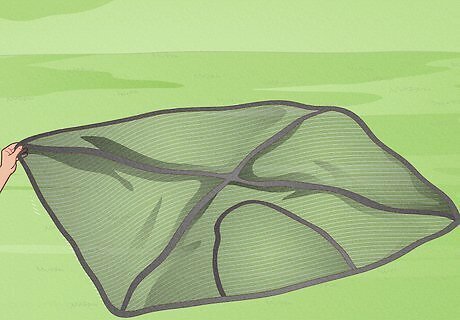
Lay out the net. Spread the net over the area you have chosen. Pull the stake loops on the ends of the tent out to the corners of your sleeping area. If your net has a base, it will be easy to tell if you have it right-side up. If not, check to make sure any zippers are on top of the net.
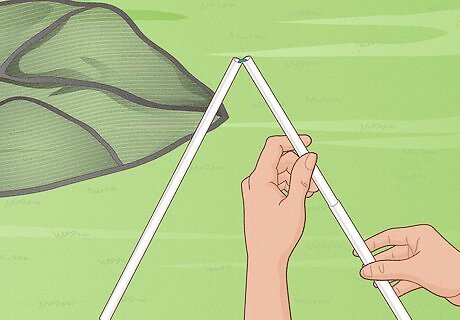
Connect the poles. The poles will be broken into small sections that are connected with an elastic rope. Connect the sections together to form the full length of the pole. If you have polls of different lengths, separate them so you don’t accidentally start to use a short poll where a long poll is needed.
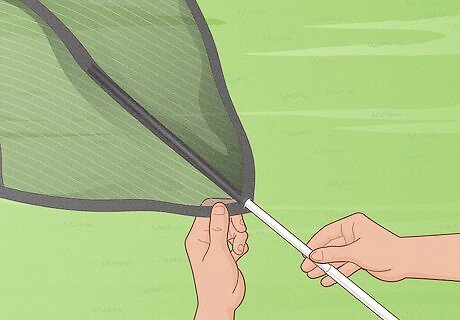
Insert the polls into the net. Depending on the particular net you have, there will either be fabric sleeves or clips that hold the polls in place. The polls will extend from one stake loop, over the top of the tent, and connect to the stake loop on the opposite side of the net. If you have a rectangular net, you will most likely have two long polls that cross each other in an X shape at the top of the net. On more elaborate nets, there may be a space for a smaller poll that holds the entryway of the net up.

Stake the net to the ground. Using the included stakes, or sticks if no stakes are included with the net, stake the tent to the ground by hammering the stakes into each corner of the net. There will be loops on the corner of the tent that the stakes pass through. If you’re inside, you don’t need to stake the net to the ground.
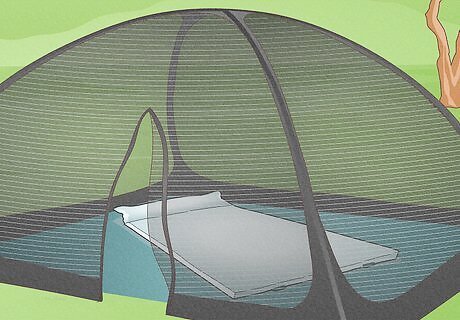
Place your sleeping bag or mattress inside the net. Keep it away from the edges of the net since mosquitoes can bite through the net if your skin is touching the edges.
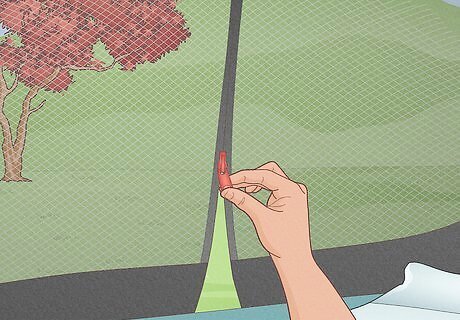
Close all of the zippers. Make sure every zipper is closed completely. Otherwise, smaller mosquitoes may be able to get through.
Setting-up Wedge and Bell Nets
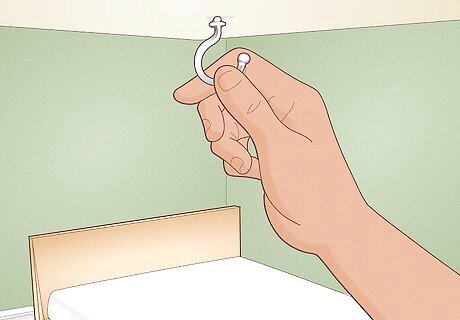
Locate an area over your bed to attach the net. Wedge nets work by wrapping under your bed and attaching to the ceiling in one spot over your head. Bell nets use the same principle, but they attach over the center of your bed. Thus, there has to be a spot over your bed to attach the net. This will usually be a hook, pin, or fixture on the ceiling. If you can’t find a spot over the head of your bed to attach the net, consider moving the bed to a more suitable spot. An overhead beam will work at an attachment point. If there are no good spots available, you can screw a hook into the ceiling or use a strong adhesive hook. Adhesive hooks work well in hotel rooms.
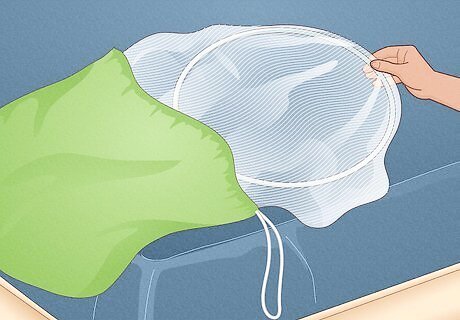
Unpack the net. Pull the net out of its bag and stretch it out on your bed. Also remove any rope or string that came with the net.
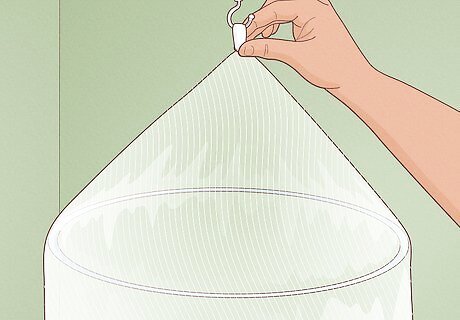
Secure the top of the net to the ceiling. Locate the part of the net that attaches to the ceiling. On some wedge nets this part will be a strip of thicker fabric; on other nets it will simply be a loop. On bell nets, there will be a small square of material that forms the top of the bell. Wrap a rope or string through the loop on your net and tie it to the anchor on the ceiling. If the anchor is a beam you should wrap the rope around the beam several times and then tie the end securely.

Seal the bottom of the net. Drape the corners of the net around your bed and tuck them under your mattress. Make sure that you get every inch of the net tucked in. If there isn’t enough fabric to tuck under the mattress, you may need to lower the top of the net that is attached to the ceiling. You can do this by letting out slack on the rope or string you used to attach the net.
Setting-up Box Nets
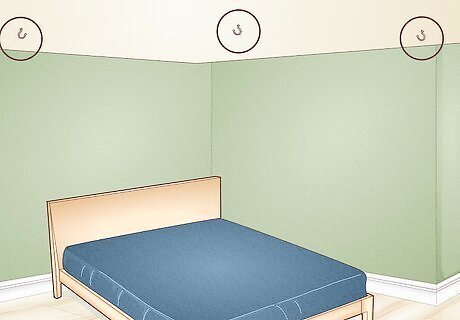
Locate an area over your bed to attach the net. Box nets provide more space for you to move around in your bed without touching the walls of the net and getting stung through the net. However, unlike wedge and bell nets, box nets require four attachment points—one for each corner of the net. Look for hooks, pins, or fixtures on the ceiling. If you can’t find a spot over the head of your bed to attach the net, consider moving the bed to a more suitable spot. An overhead beam will work at an attachment point. If there are no good spots available, you can screw a hook into the ceiling or use a strong adhesive hook.
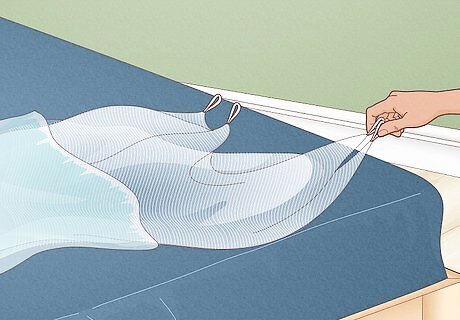
Unpack the net. Remove and net and any strings or rope from the bag. Drape the net over your bed and match up the corners with the four corners of your bed.

Secure the top of the net to the ceiling. Locate the part of the net that attaches to the ceiling. There will be four loops on the top part of the box—this is the part that attaches to the ceiling. Wrap a rope or string through the loops on your net and tie it to the anchors on the ceiling. If the anchor is a beam you should wrap the rope around the beam several times and then tie the end securely.

Seal the bottom of the net. Drape the corners of the net around your bed and tuck them under your mattress. Make sure that you get every inch of the net tucked in. If there isn’t enough fabric to tuck under the mattress, you may need to lower the top of the net that is attached to the ceiling. You can do this by letting out slack on the rope or string you used to attach the net.




















Comments
0 comment